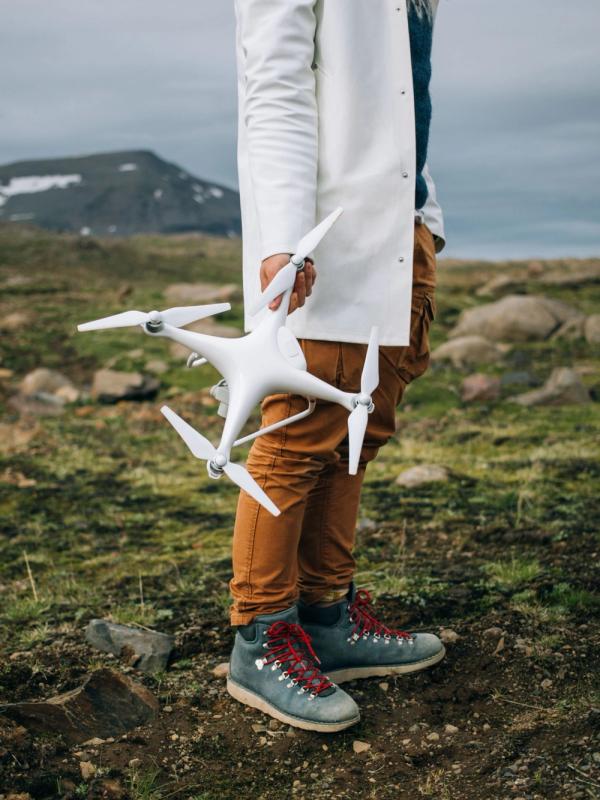
Flying Drones in Iceland: Complete 2025 Guide to Regulations and Epic Locations
Iceland's landscapes have turned the country into a hotspot for drone photography. From volcanic eruptions to glacier footage, aerial shots of this Nordic island capture something truly special. But Iceland doesn't mess around when it comes to drone laws – they're strict and designed to protect the country's ecosystems and airspace.
Break the rules and you're looking at hefty fines or losing your drone entirely. Follow them and you'll get some of the most stunning aerial footage you can imagine.
This guide walks you through everything you need to know about flying drones in Iceland in 2025: from getting registered to finding the best spots that won't land you in hot water.
Key takeaways
- You have to register your drone in Iceland, even if you’re just visiting.
- Many popular spots are no-fly zones, especially national parks and areas near airports.
- Break the rules and you risk big fines, but there are still plenty of legal places to fly.
- Weather changes fast, so fly safely and watch out for wildlife and local regulations.
Iceland Drone Regulations (2025 Update)
Iceland's drone laws follow European standards but throw in extra protections for the country's unique environment. The rules look complex at first glance, but they're really about keeping everyone safe and protecting Iceland's fragile ecosystems. Get familiar with these regulations before you arrive: it'll save you time, money, and potentially severe legal headaches. Most tourists can fly legally with basic registration and some common sense, but the penalties for screwing up are no joke.
Registration and Licensing
Every single drone operator in Iceland has to register with the Icelandic Transport Authority (Samgöngustofa) before they fly. That includes tourists.
You'll do this through the Flydrone portal at flydrone.is. It costs about 5,500 ISK (roughly $40) and lasts five years across all EASA countries. You get a unique operator ID that has to be visible on your drone.
If you have a drone heavier than 250 grams, you'll need to pass a competency exam. For most recreational flying (A1/A3 subcategories), it's a free online test that covers basic safety topics. The A2 category needs an in-person exam if you want to fly closer to people.
You have to be 16 to pilot solo. Kids under 16 can fly lightweight drones under 250g if an adult is supervising.
General Flying Rules
Iceland's rules are pretty similar to those of the European Union Aviation Safety Agency (EASA). Here's what you can't forget:
- You can’t fly the drone higher than 120 meters above ground.
- You have to keep it in sight the whole time. That means, no sending it behind hills or buildings where you can't see it.
- Keep at least 50 meters away from people, cars, and buildings (150 meters in rural spots).
If you want to fly at night, you'll need anti-collision lights. You can't drop anything from your drone or buzz crowds. Flying a drone over 3kg in urban areas requires special permission.
Your drone always yields to manned aircraft: helicopters, planes, even the Icelandic Coast Guard on search and rescue missions get right of way.
Restricted & No-Fly Zones
This is where tourists often trip up. Iceland has tons of no-fly zones, and the most popular tourist spots usually have the tightest restrictions.
All three national parks – Thingvellir, Vatnajökull, and Snæfellsjökull – ban recreational drones unless you've got permits. Famous waterfalls like Skógafoss, Gullfoss, and beaches such as Reynisfjara black sand beach are either totally off-limits or you get tiny windows to fly.
Airports are protected by large no-fly bubbles: stay 2km back from big airports like Keflavík and 1.5km from smaller ones. Reykjavík's domestic airport sits right near downtown, so most of the capital is basically a no-fly zone.
When volcanoes blow (and they do regularly), flight restrictions increase to 1,500 feet. For example, during that July 2025 Reykjanes eruption, drones were banned over the whole peninsula while it was active.
The official Icelandic drone map at kort.gis.is shows what's restricted in real time. Check it before every flight, as these zones shift based on weather, volcanic activity, and events.
Insurance, Privacy, and Penalties
Drone insurance isn't required for most recreational flights, but you'd be smart to get it. Insurance becomes mandatory if your drone is over 20kg or you’re flying commercially.
Break the rules and you're facing fines up to 500,000 ISK (about $3,600). Authorities can confiscate your drone right there, and if you really screw up, you might face prosecution under aviation safety laws.
Don't forget privacy laws either. Hovering over people's homes or filming folks without permission can get you in trouble. Iceland takes privacy seriously, and drone violations can pile on extra legal problems beyond aviation penalties.
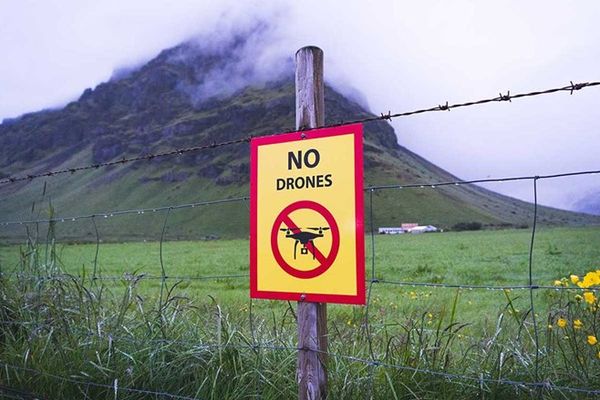
Best Places to Fly Drones in Iceland
Once you've got the legal stuff sorted, Iceland offers some of the world's most jaw-dropping drone locations. The trick is finding spots that give you incredible scenery without crazy access issues or heavy restrictions. These range from very accessible areas near Reykjavík to remote wilderness that requires real planning to reach.
Westfjords: Untouched Beauty
The Westfjords give you some of Iceland's most remote and stunning scenery with minimal drone restrictions. This northwest region sees way fewer tourists, so you get more space to fly without dodging crowds.
- Remote fjords around Ísafjörður deliver dramatic coastal shots with massive cliffs and tiny fishing villages.
- Rauðisandur Beach has rare red sand that creates a killer contrast from above.
- Dynjandi waterfall allows drones to fly outside the bird nesting season, which runs from May through August.
The isolation here means you can often fly for hours without bumping into another soul.
The Westfjords' biggest advantage is space: huge areas with no airports, no national park restrictions, and barely any infrastructure to worry about.
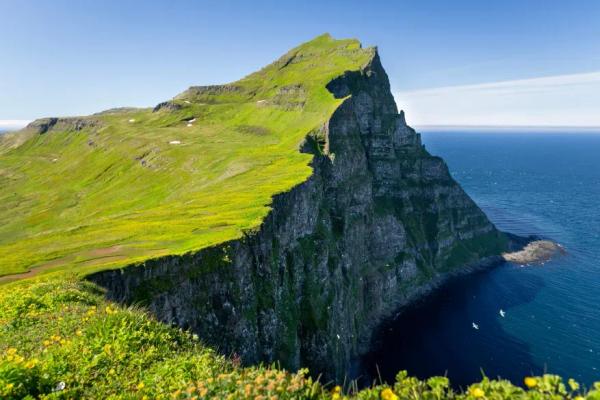
Reykjanes Peninsula: Volcanic Wonders
Just south of Reykjavík, the Reykjanes Peninsula is home to volcanic landscapes and geothermal features that look incredible from the air.
- Gunnuhver hot springs pump out otherworldly steam clouds against black lava fields.
- The Reykjanesviti lighthouse gives you classic Icelandic coastal scenes.
- Recent volcanic activity at Fagradalsfjall created fresh lava fields that look insane from above.
The peninsula generally allows drone flights, but watch the no-fly zone around Keflavík airport. During active eruptions, temporary restrictions kick in. Outside those periods, you can catch some seriously impressive volcanic footage.
Being close to Reykjavík makes this perfect for day trips when the weather in other parts of the country gets too rough.
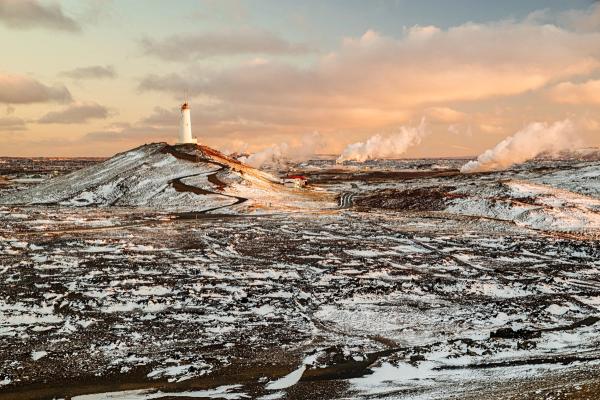
Hidden Waterfalls and River Canyons
While famous waterfalls like Gullfoss have strict restrictions, lesser-known falls offer better opportunities for legal drone flights.
- Kvernufoss sits in a small canyon right next to Skógafoss but gets way fewer visitors. The narrow gorge creates unique aerial angles as your drone threads between moss-covered walls.
- Brúarfoss has bright blue water that pops against black volcanic rock. You need a short hike to reach it, which keeps crowds thin and makes drone flying more doable.
Hit these spots early morning or late evening to dodge the few tourists who make the trek. These smaller waterfalls let you get dramatic close-ups while staying within legal altitude limits.
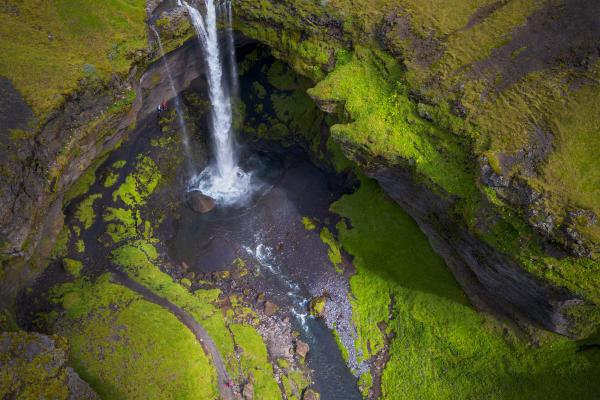
Highlands and Glaciers
Iceland's interior Highlands offer massive, empty spaces perfect for sweeping drone footage. Þórsmörk valley lies between glaciers and gives you views of braided rivers and wooded valleys framed by ice caps.
- Landmannalaugar's colorful rhyolite mountains create wild landscapes from above. Just check for seasonal permits during peak hiking season (June through August).
- Sólheimajökull glacier tongue extends from Mýrdalsjökull and allows drone flights over crevassed ice. The contrast between blue ice and black volcanic ash creates striking shots. Fly early morning or evening when tour groups aren't crawling all over the glacier.
You’ll need 4x4 vehicles to drive the infamous F-roads to reach the area, but the effort pays off with landscapes you won't find anywhere else.
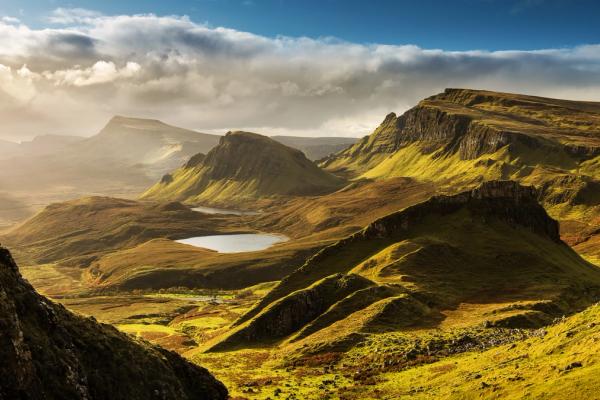
Off-the-Beaten-Path North and East
Iceland's northeastern regions remain largely undiscovered by drone enthusiasts, offering wild coastlines with minimal restrictions.
Langanes Peninsula and Melrakkaslétta deliver long black-sand beaches and windswept moors with basically no development. There are no airports or protected areas, which means you can fly freely while exploring some of Iceland's most remote landscapes.
These areas see so few visitors that you might fly for miles along the coast without running into another person.
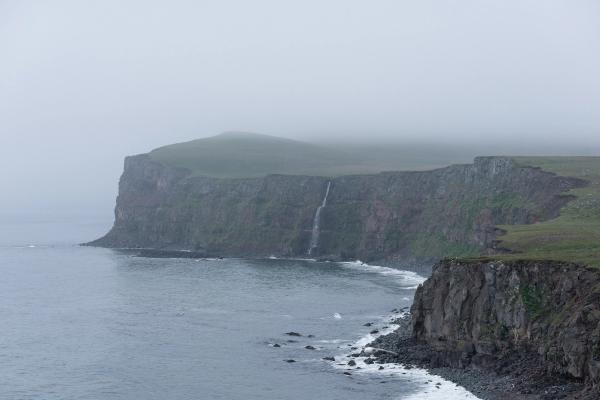
Practical Drone Tips for Travelers
- Always carry proof of registration and insurance docs; authorities do check, especially around popular tourist spots.
- Download offline maps and drone apps before heading to remote areas where cell service vanishes.
- Skip the bird nesting season (April through July) in coastal areas where puffins and other seabirds breed. Even outside protected reserves, bothering nesting birds can hit you with fines under wildlife protection laws.
- Fly early morning or late evening for multiple reasons: better lighting for photos, fewer tourists to work around, and usually calmer wind conditions. Iceland's crazy daylight hours in summer make these extended golden hour periods totally practical.
- Weather shifts fast in Iceland. Always check forecasts on vedur.is and have backup plans ready. High winds can ground even experienced pilots, and sudden fog can make visual line of sight impossible.
- The Icelandic Meteorological Office (Veðurstofa Íslands) gives you real-time weather data that's crucial for safe flight planning. Their wind speed predictions help you figure out if conditions will work throughout the day.
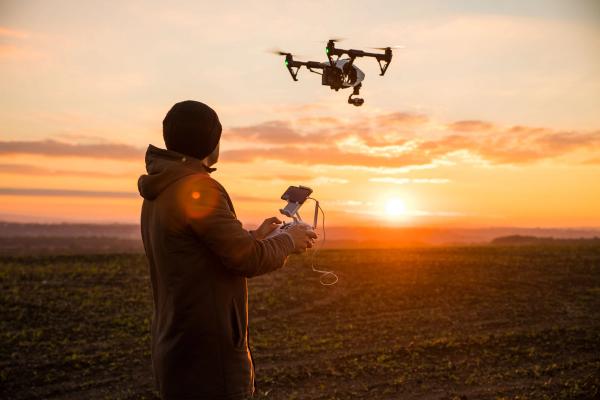
Conclusion
Flying drones in Iceland means respecting both regulations and the environment. The country's stunning landscapes make all the extra planning worth it, but only if you follow the rules.
Register your drone, check the official maps, respect no-fly zones, and always put safety before getting the perfect shot. Iceland's nature is fragile, and drone pilots play a role in preserving it for future visitors.

